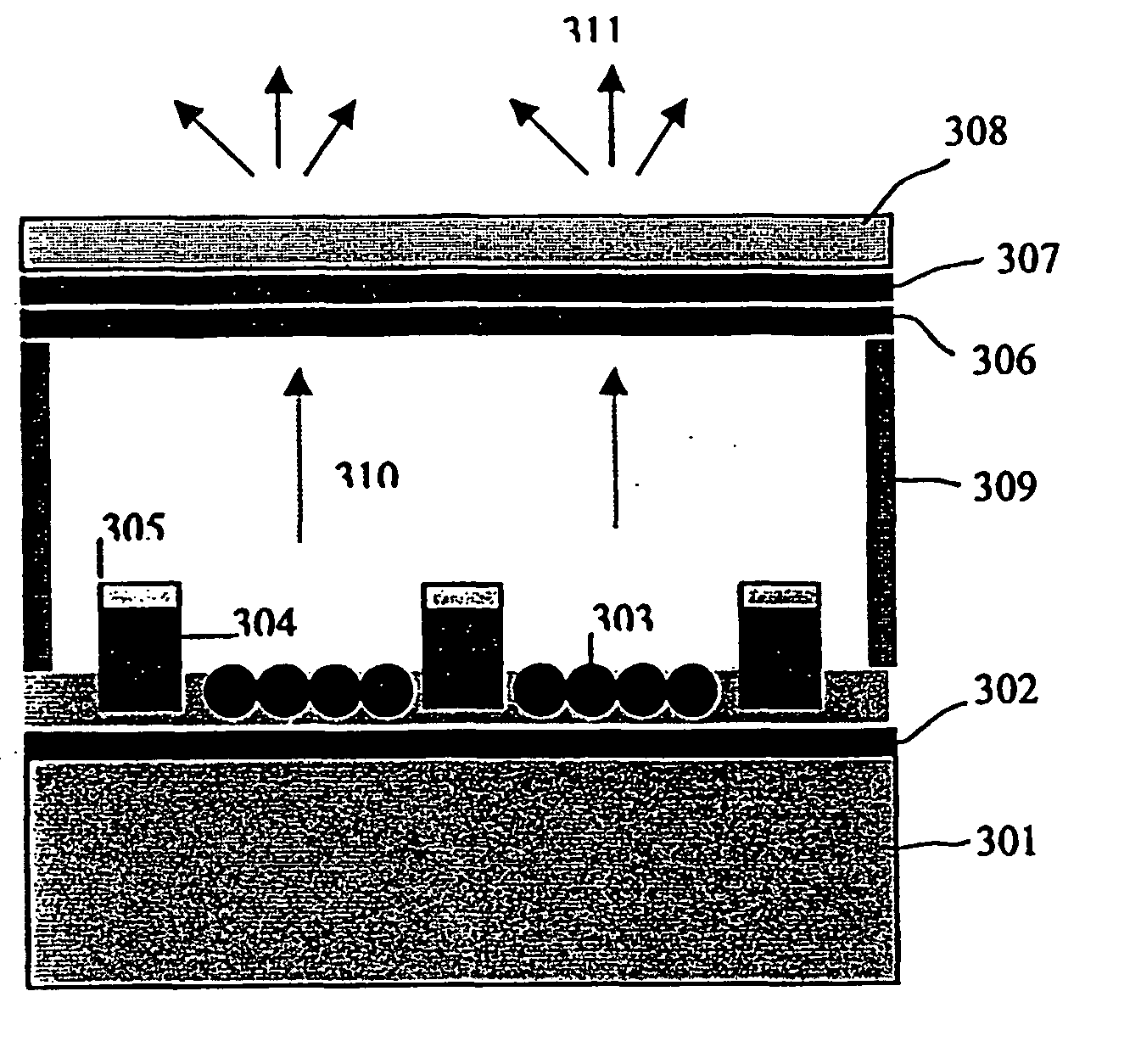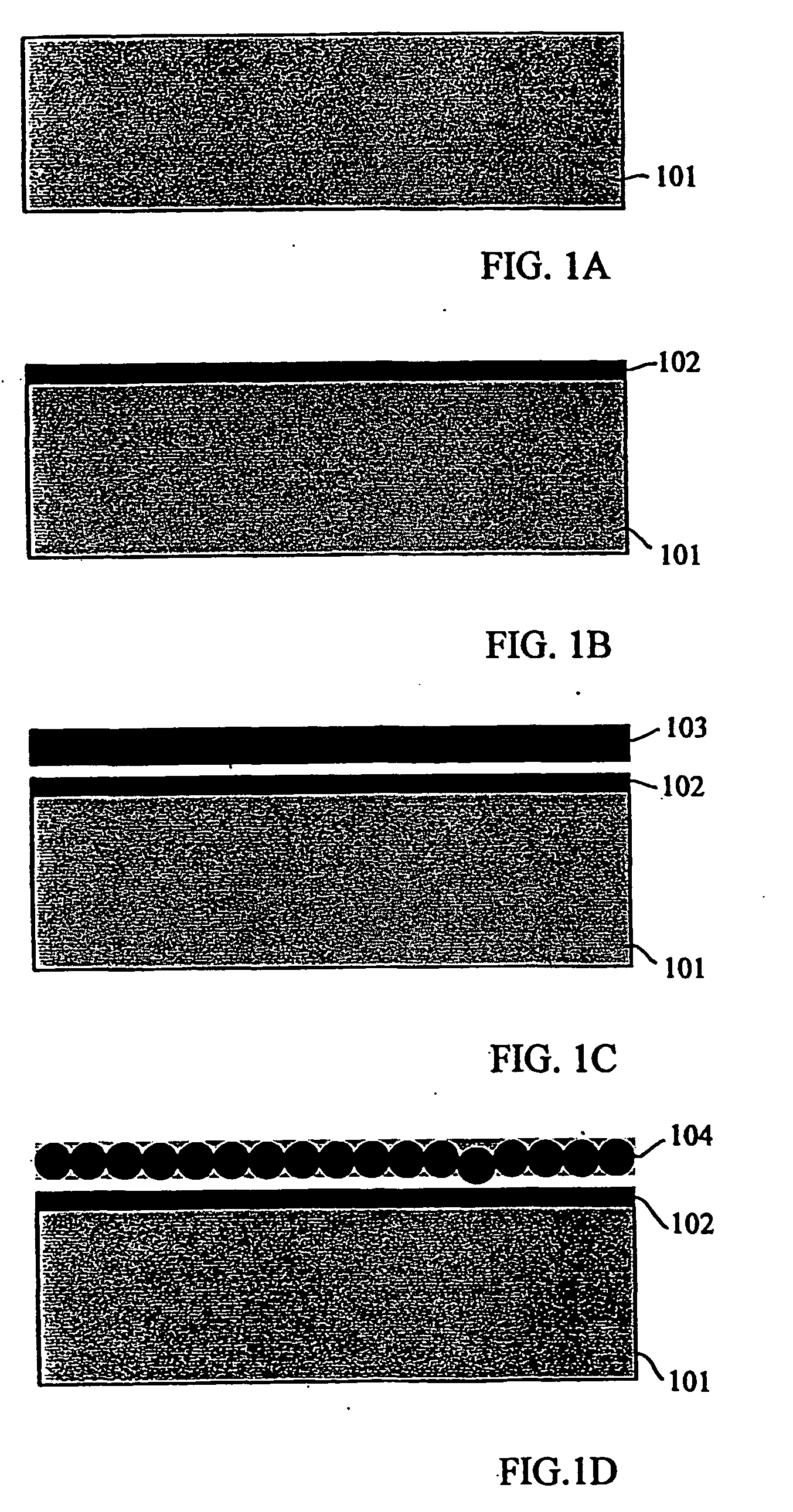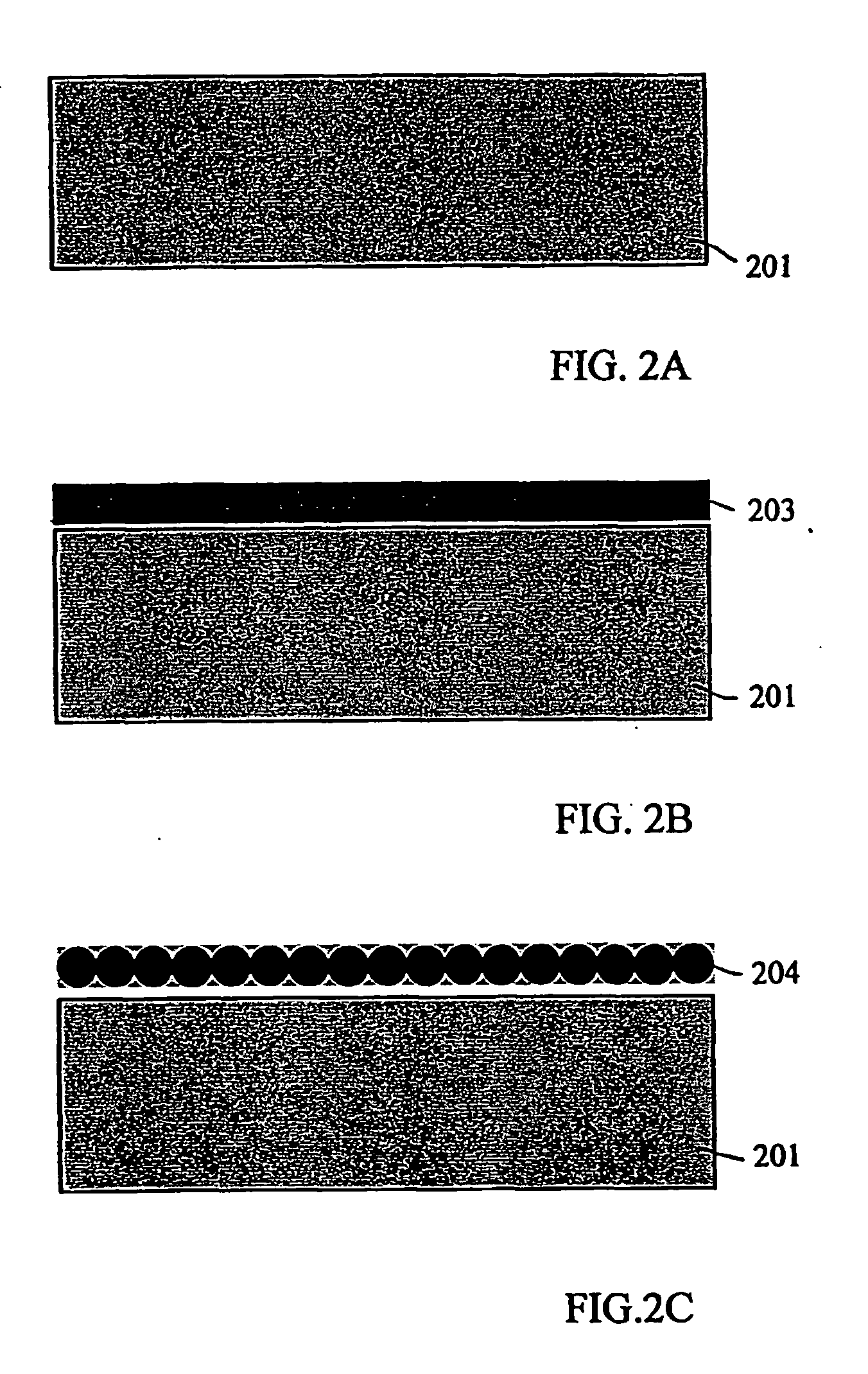Field emission device and method of fabricating same
- Summary
- Abstract
- Description
- Claims
- Application Information
AI Technical Summary
Benefits of technology
Problems solved by technology
Method used
Image
Examples
example 1
[0039] The emission current density dependence on the applied field for a FeC composite film prepared by using this invention is shown in FIG. 6. An image of the spatial emission spots on the ITO-glass anode is inserted in the drawing. The emission area is 6 mm in diameter. Clearly, the FeC film shows a very good emission property, i.e., high emission current density (10 mA / cm2 at 10 V / μm), low turn-on emission field (1 V / μm at 1 nA / cm2), high emission spot density (104 / cm2), and a uniform distribution of spatial emission spots.
example 2
[0040] FIGS. 7(a) and (b) show examples of diode-type field emission displays using a carbon composite film as emitter. A star image about 5 mm in size on a ZnO:Zn phosphor coated ITO plate can been seen in FIG. 7(a), with an applied field of 10 V / μm. A uniform emission image with high emission spots has been obtained at such low field. FIG. 7(b) shows a line image of field emission array on ITO plate. The line width is 100 μm, the applied field is 12 V / μm. Twelve pieces of luminance lines of 10 mm in length can be clearly seen. From this result, it is apparent that a high-resolution field emission display can be achieved using the invented carbon composite films as emitters.
[0041] Now that preferred embodiments of the field emission component for a field emission device (FED) and method of fabricating same have been described in detail, it will be apparent that they provide a number of significant advantages over comparable prior art techniques, including, but not limited, to the ...
PUM
| Property | Measurement | Unit |
|---|---|---|
| Temperature | aaaaa | aaaaa |
| Temperature | aaaaa | aaaaa |
| Temperature | aaaaa | aaaaa |
Abstract
Description
Claims
Application Information
 Login to View More
Login to View More - R&D
- Intellectual Property
- Life Sciences
- Materials
- Tech Scout
- Unparalleled Data Quality
- Higher Quality Content
- 60% Fewer Hallucinations
Browse by: Latest US Patents, China's latest patents, Technical Efficacy Thesaurus, Application Domain, Technology Topic, Popular Technical Reports.
© 2025 PatSnap. All rights reserved.Legal|Privacy policy|Modern Slavery Act Transparency Statement|Sitemap|About US| Contact US: help@patsnap.com



